| home|||||||solo and collaborative exhibitions|||||||group exhibitions|||||||other work|||||||about|||||||contact |
| Of Consequence |
| Vox Populi Gallery, Philadelphia, PA _December 5th, 2015- January 10th, 2016 |
| press release |
| scroll down to see all work |
| |_ |
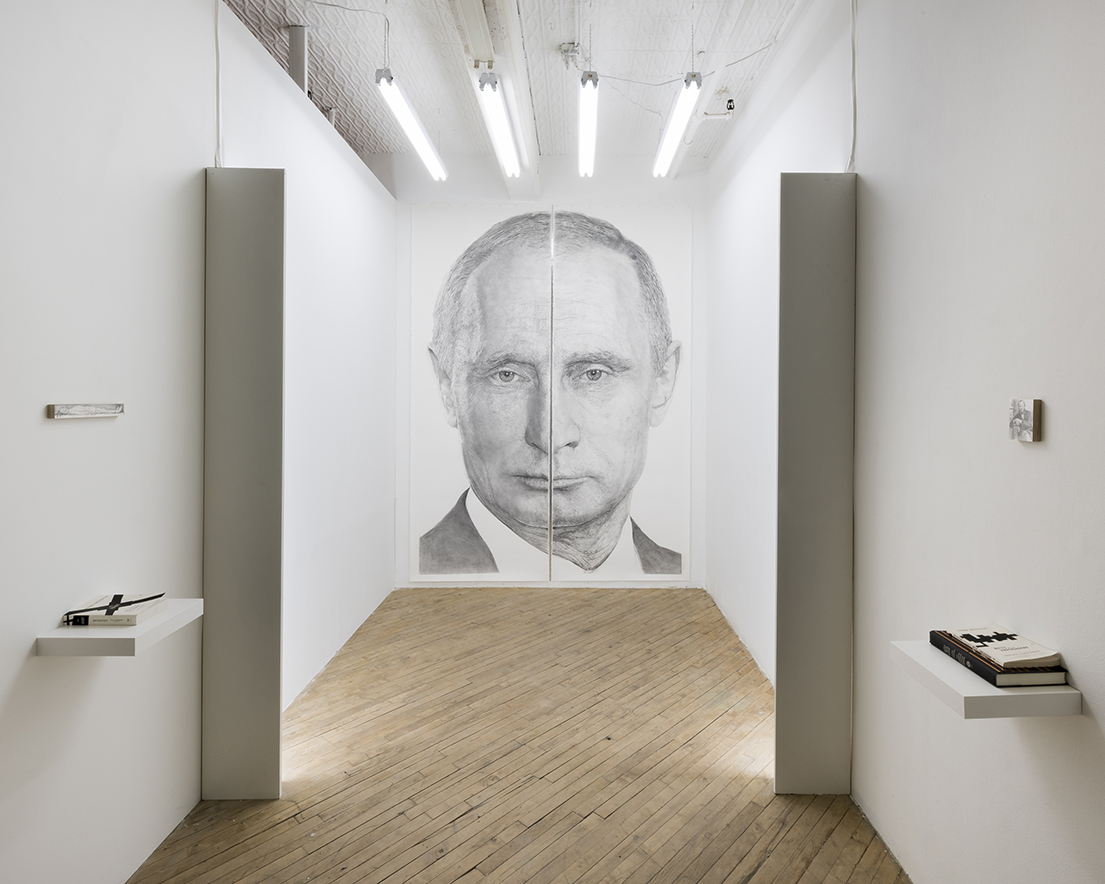 |
| Exhibition Overview: Of Consequence Vladimir Vladimirovich Putin Graphite on BFK RIVES Paper 122” x 92” Vox Populi Gallery, Dec 2015- Jan 2016 |
| _ |
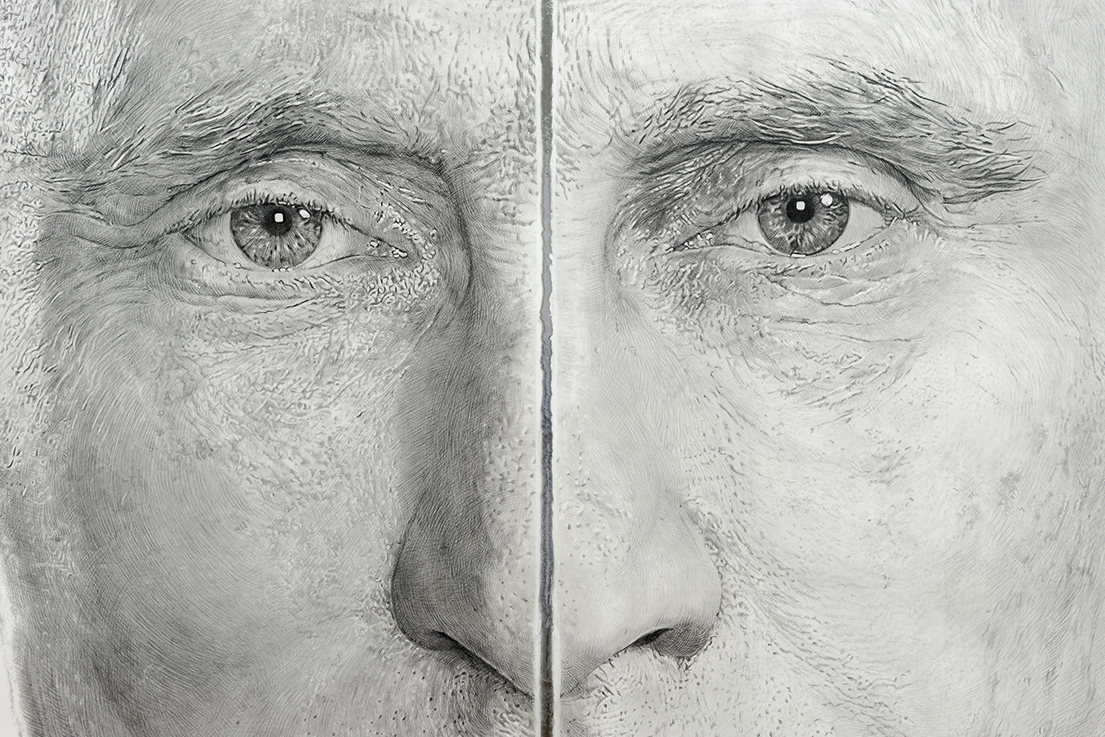 |
| Vladimir Vladimirovich Putin (detail) Graphite on BFK RIVES Paper 122” x 92” |
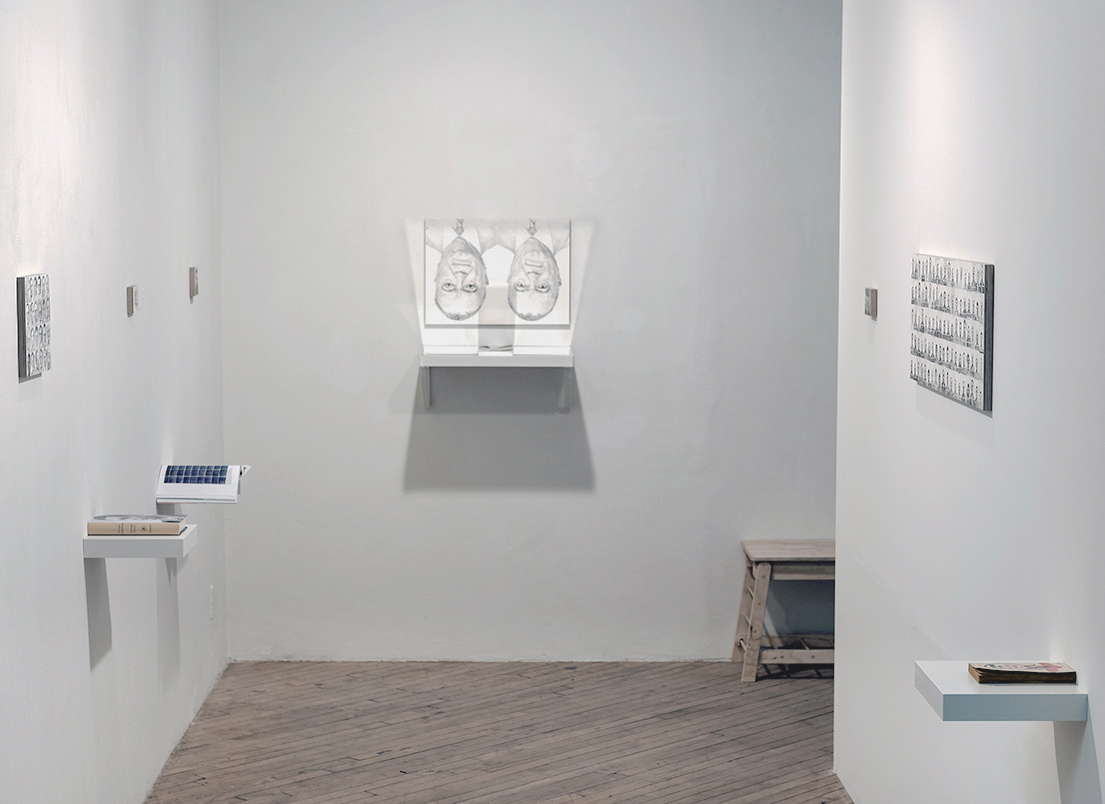 |
| Exhibition Overview: Of Consequence Vox Populi Gallery, Dec 2015- Jan 2016 |
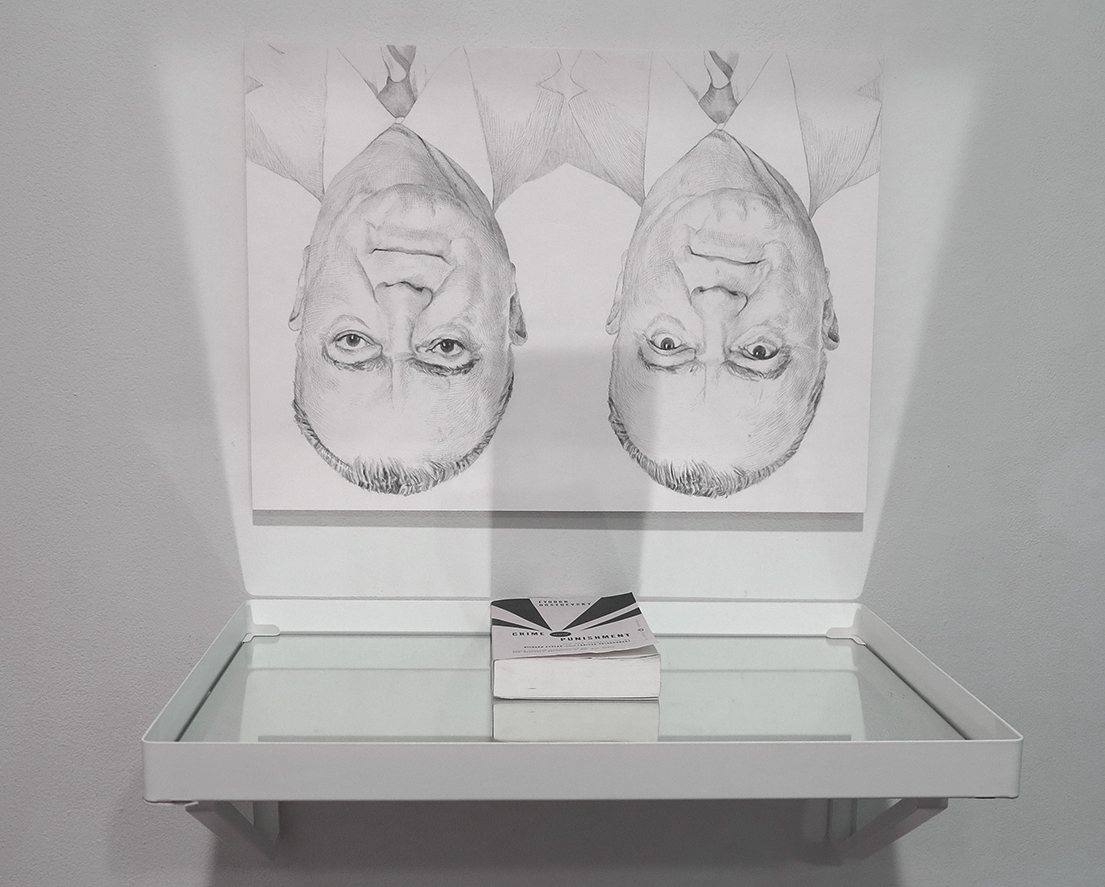 |
| J. Edgar Hoover, Double Graphite on Panel with Mirror 16“ x 22“ 2015 Book on mirror: Crime and Punishment , 1866 Fyodor Dostoyevsky (Nov. 1821 – Feb.1881) Note: This novel focuses on the mental anguish and moral dilemmas of Rodion Raskolnikov, an impoverished ex-student in St. Petersburg who formulates and executes a plan to kill an unscrupulous pawnbroker for her cash. Raskolnikov, in attempts to defend his actions, argues that with the pawnbroker's money he can perform good deeds to counterbalance the crime, while ridding the world of a vermin. He also commits the murder to test a theory of his that dictates some people are naturally capable of such actions, and even have the right to perform them. Several times throughout the novel, Raskolnikov compares himself with Napoleon Bonaparte and shares his belief that murder is permissible in pursuit of a higher purpose. |
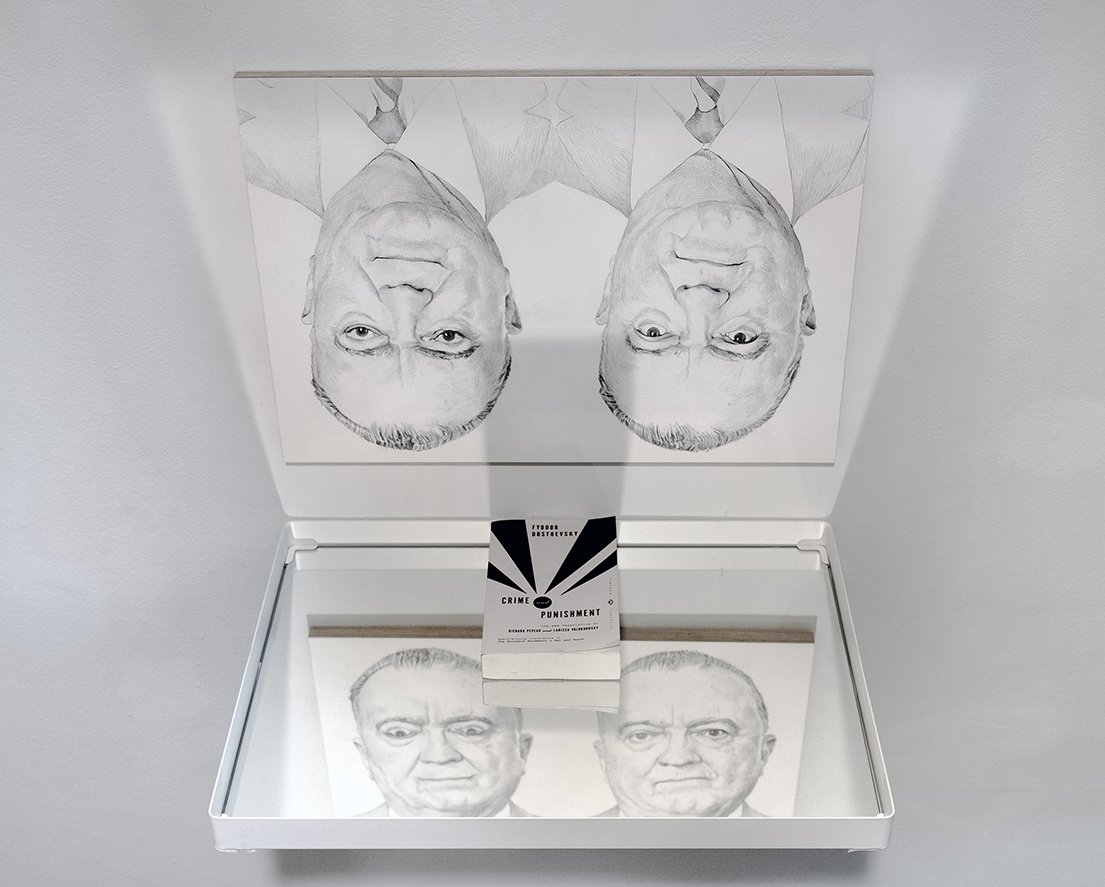 |
| J. Edgar Hoover, Double Graphite on Panel with Mirror 16“ x 22“ 2015 Note: The Thatcher effect or Thatcher illusion is a phenomenon where it becomes more difficult to detect local feature changes in an upside-down face, despite identical changes being obvious in an upright face. The effect was originally created by Psychology Professor Peter Thompson in 1980. |
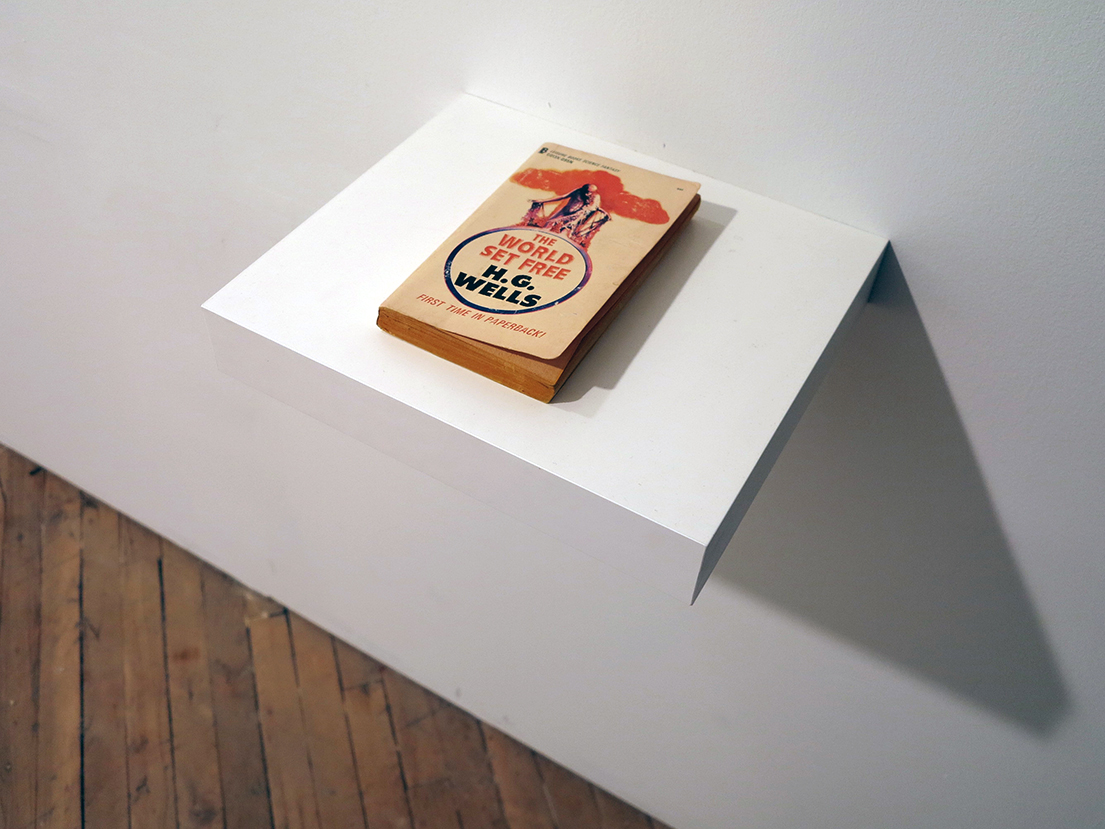 |
| Found book: The World Set Free: A Story of Mankind , 1914 H.G. Wells Note: This book is based on a prediction of nuclear weapons of a more destructive and uncontrollable sort than the world had yet to see. |
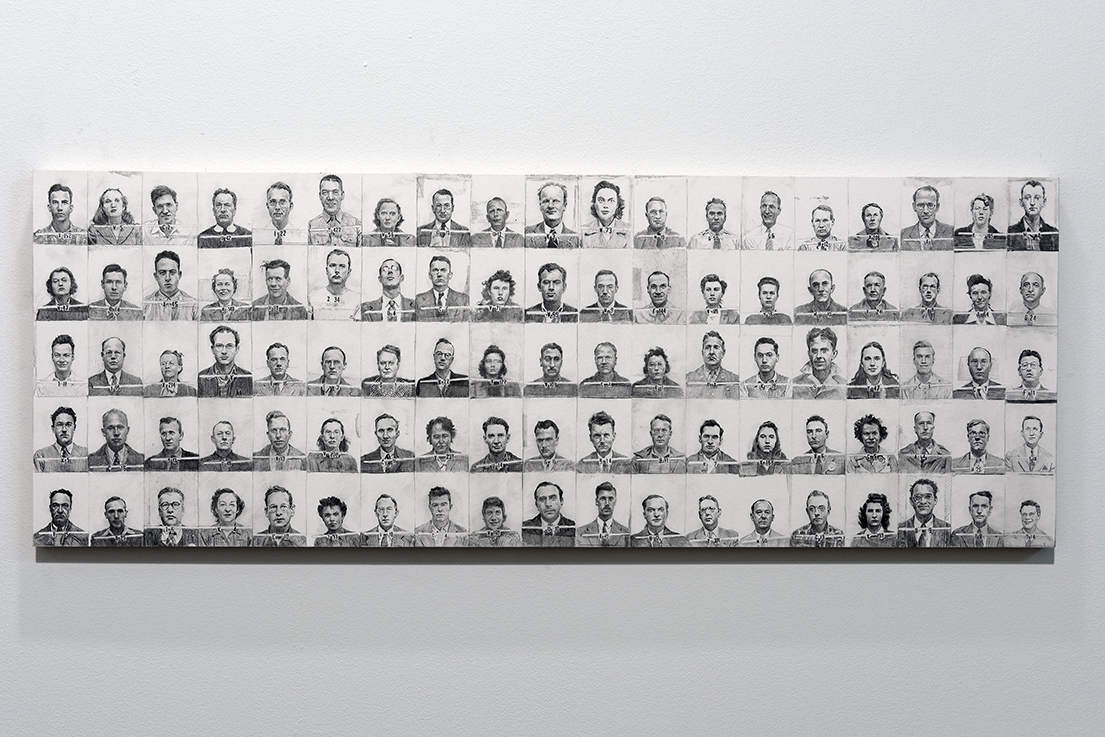 |
| 95 ID Badges from Project Y at Los Alamos Graphite on Panel 12.5“ x 35“ 2015 Note: A collection of physicists, mathematicians, chemists, metallurgists, physicians, engineers, technicians, secretaries, librarians, housekeepers, cleaners, nurses, laborers, and other people who are necessary to make a nuclear bomb. |
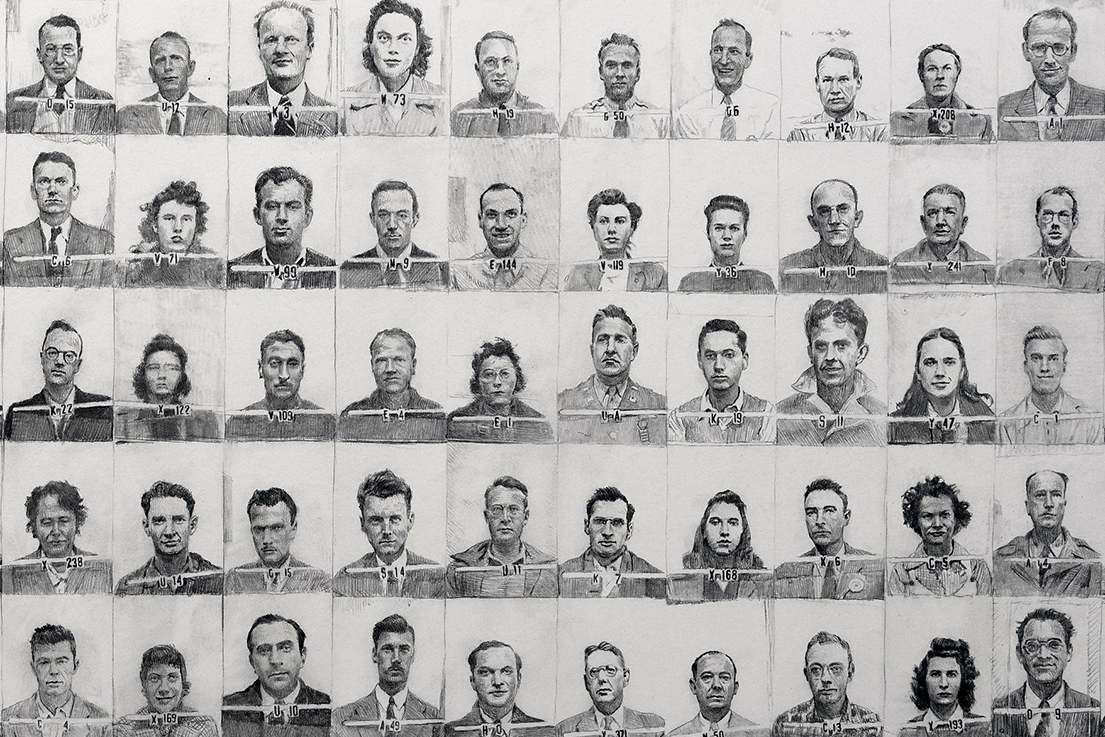 |
| 95 ID Badges from Project Y at Los Alamos (detail) Graphite on Panel 12.5“ x 35“ 2015 |
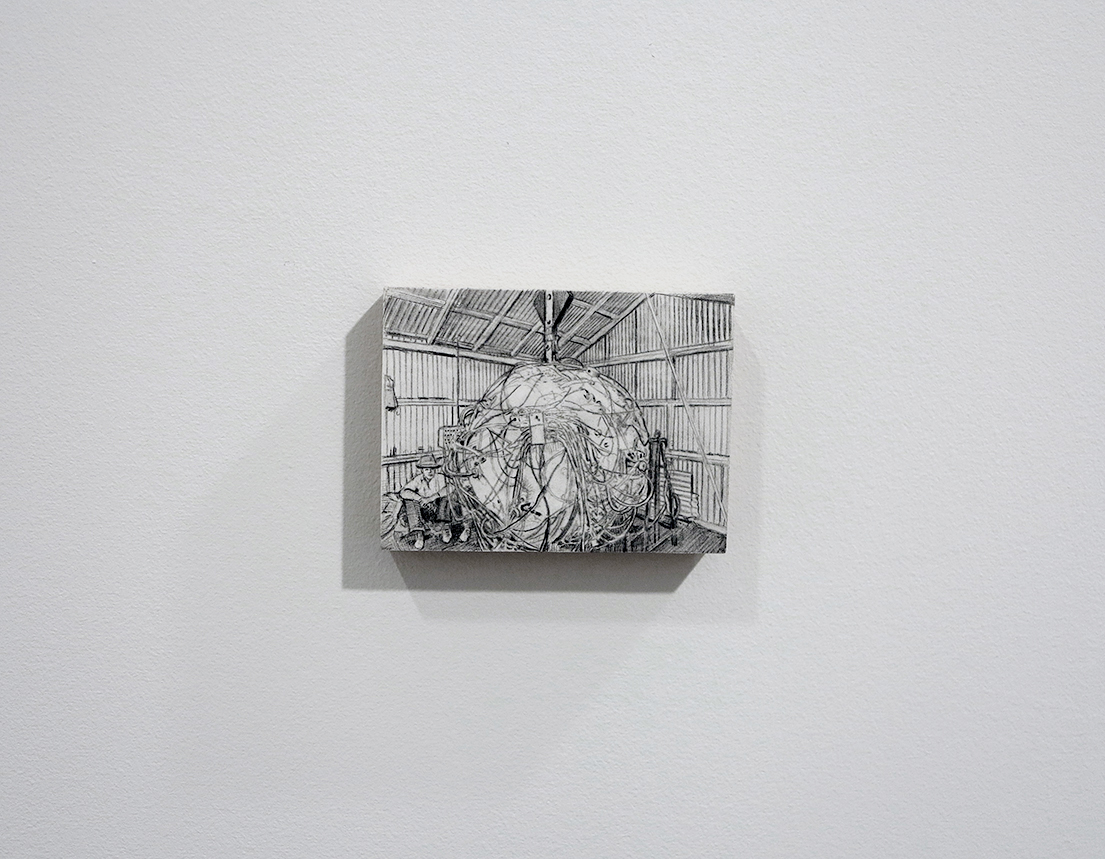 |
| The Gadget Graphite on Panel 3“ x 4” 2015 Note: “Trinity” was the code name of the first detonation of a nuclear weapon, conducted by the United States Army on July 16, 1945, as part of the Manhattan Project. The code name "Trinity" was assigned by J. Robert Oppenheimer, the director of the Los Alamos Laboratory, inspired by the poetry of John Donne. The test was of an implosion-design plutonium device, informally nicknamed "The Gadget", of the same design as the Fat Man bomb later detonated over Nagasaki, Japan, on August 9, 1945. |
 |
| Exhibition Overview: Of Consequence Vox Populi Gallery, Dec 2015- Jan 2016 |
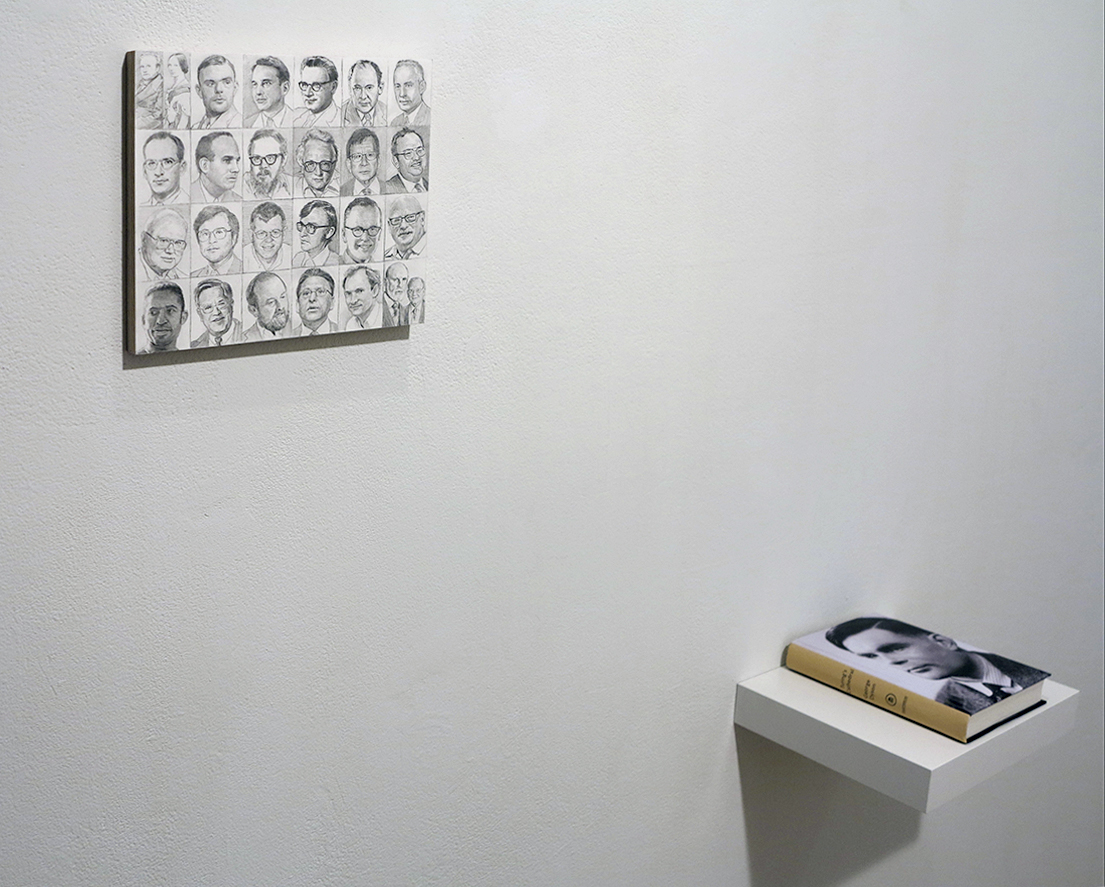 |
| Exhibition Overview: Of Consequence Vox Populi Gallery, Dec 2015- Jan 2016 |
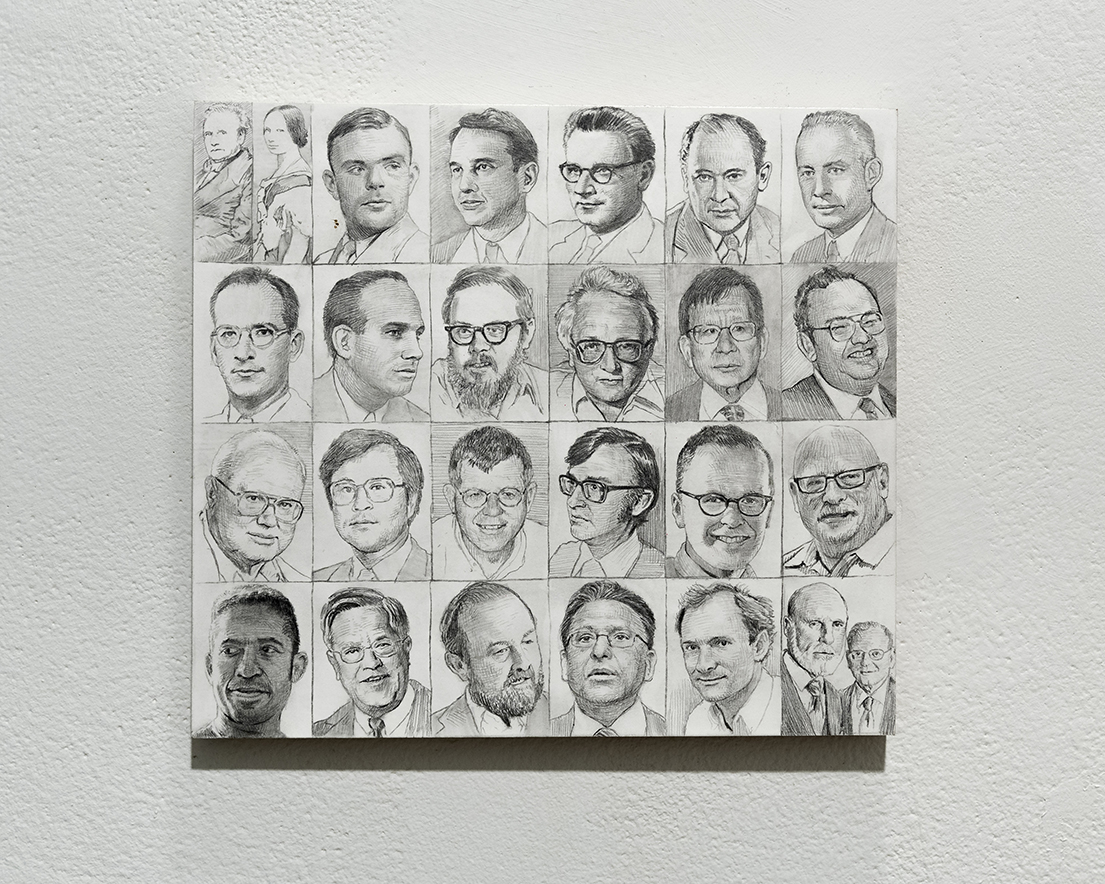 |
The Origins of Modern Computing |
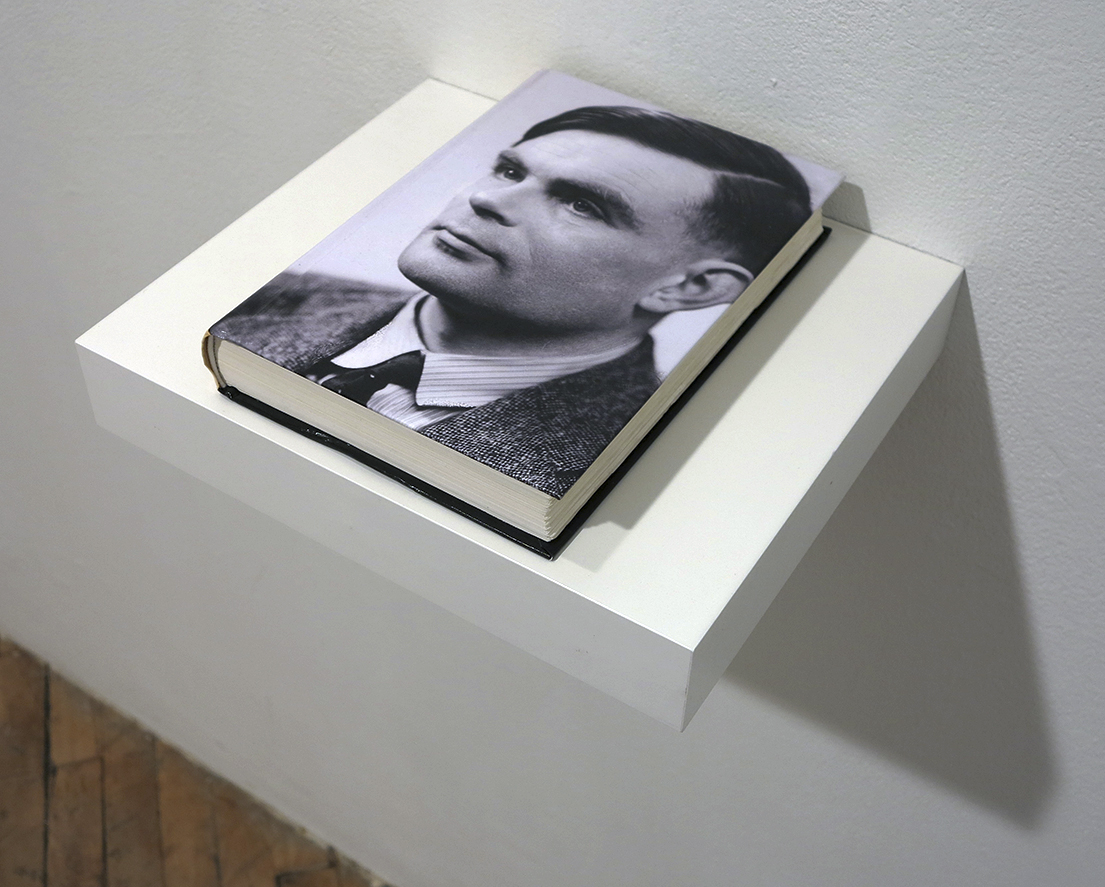 |
| Book: Turing's Cathedral: The Origins of the Digital Universe 2012 George Dyson Note: A book about how the digital universe exploded in the aftermath of World War II, Dyson illuminates the nature of digital computers, the lives of those who brought them into existence, and how code took over the world. In the 1940s and ‘50s, a small group of men and women—led by John von Neumann—gathered in Princeton, New Jersey, to begin building one of the first computers to realize Alan Turing’s vision of a Universal Machine. The codes unleashed broke the distinction between numbers that mean things and numbers that do things, and our universe would never be the same. Turing’s Cathedral is the story of how the most constructive and most destructive of twentieth-century inventions—the digital computer and the hydrogen bomb—emerged at the same time. |
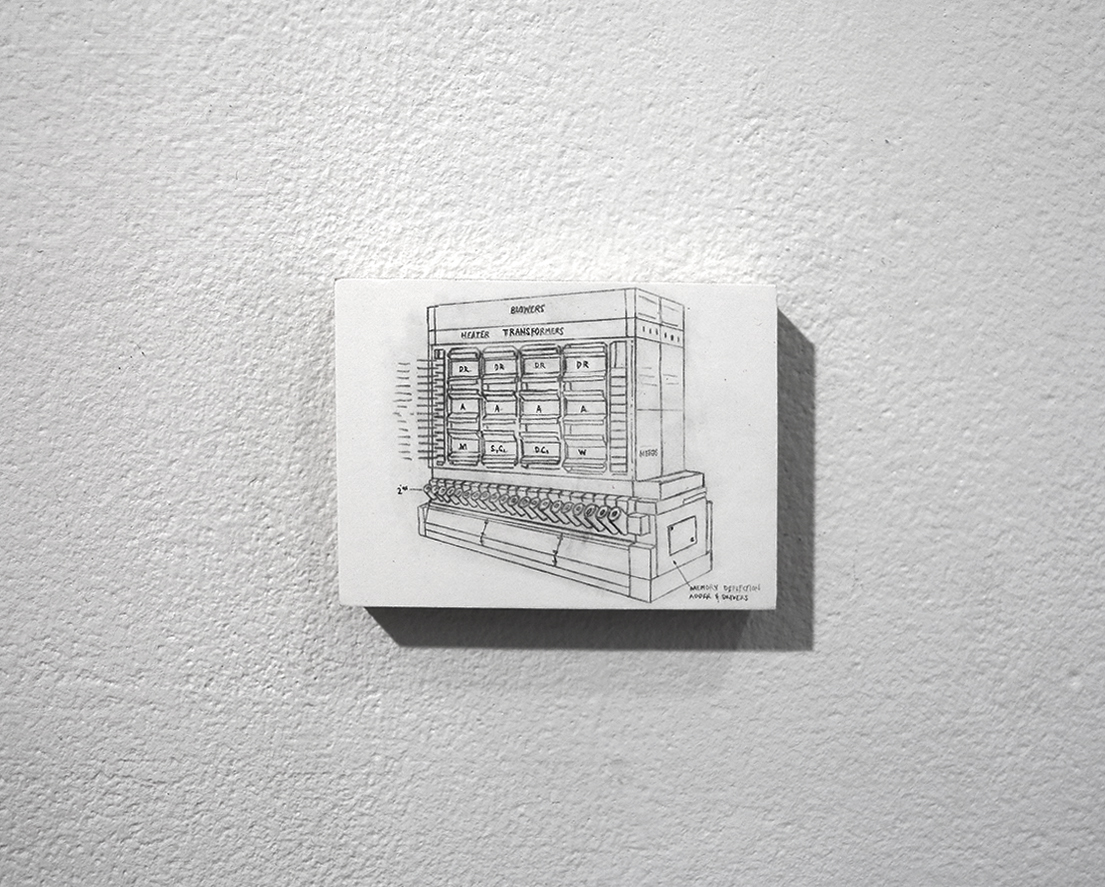 |
| IAS Computer the precursor to the MANIAC Graphite on Panel 3“ x 4“ 2015 Note: The IAS machine was the first electronic computer built at the Institute for Advanced Study (IAS), in Princeton, New Jersey, USA. It is sometimes called the von Neumann machine, since the paper describing its design was edited by John von Neumann, a mathematics professor at both Princeton University and IAS. The computer was built from late 1945 until 1951 under his direction. The general organization is called Von Neumann architecture, even though it was both conceived and implemented by others. The MANIAC (Mathematical Analyzer, Numerical Integrator, and Computer or Mathematical Analyzer, Numerator, Integrator, and Computer) was an early computer built under the direction of Nicholas Metropolis at the Los Alamos Scientific Laboratory. It was based on the von Neumann architecture of the IAS, developed by John von Neumann. |
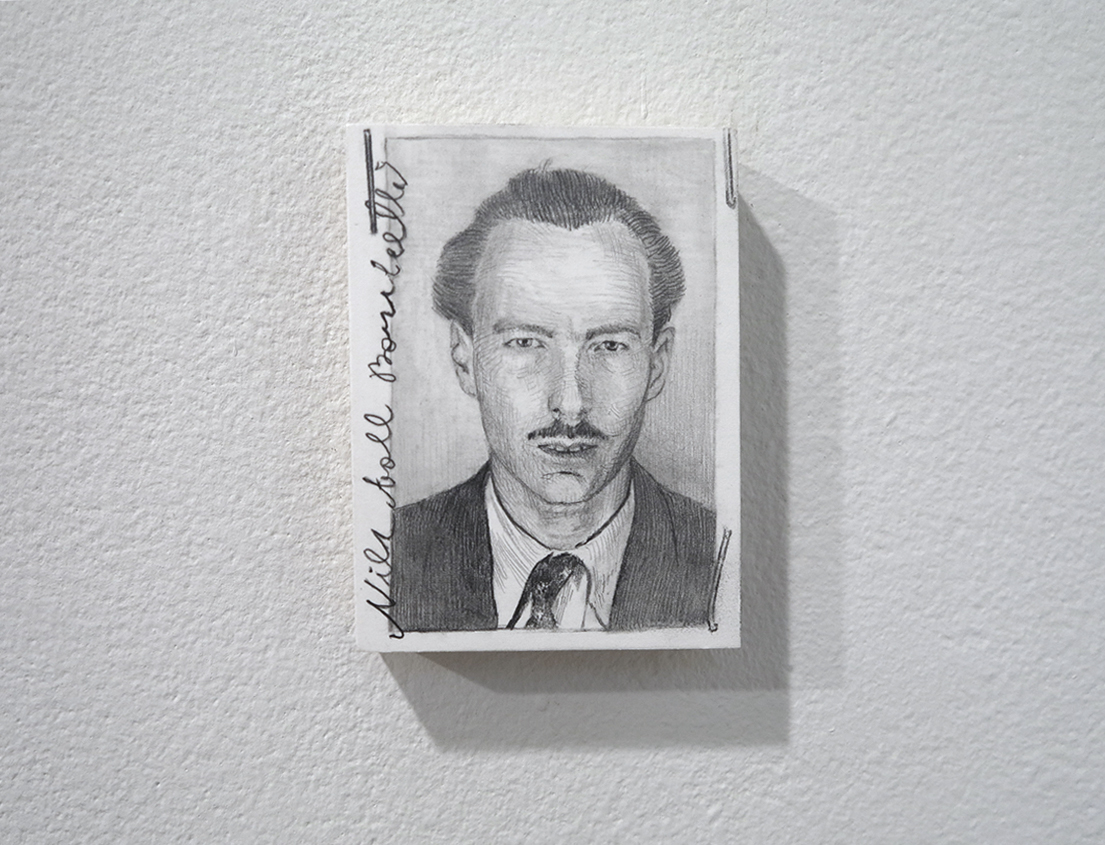 |
| Nils Als Bariecelli Graphite on Panel 4“ x 3“ 2015 Note: Barricelli's early computer-assisted experiments in symbiogenesis and evolution are considered pioneering in artificial life research. Barricelli, who was independently wealthy, held an unpaid residency at the Institute for Advanced Study in Princeton, New Jersey in 1953, 1954, and 1956. |
 |
Magazine on shelf: Cabinet Magazine, Issue 42 |
 |
| Edward Snowden Graphite on Panel 16“ x 22“ 2015 Price on Request Note: Snowden is a computer professional, former CIA employee, and former government contractor who copied classified information from the U.S. National Security Agency (NSA) and UK Government Communications Headquarters (GCHQ) for public disclosure in 2013. The information revealed numerous global surveillance programs, many run by the NSA and Five Eyes with the cooperation of telecommunication companies and European governments. On June 21, 2013, the U.S. Department of Justice unsealed charges against Snowden of two counts of violating the Espionage Act and theft of government property. On June 23, he flew to Moscow, Russia, where he has remained living in an undisclosed location in Russia while seeking asylum elsewhere. |
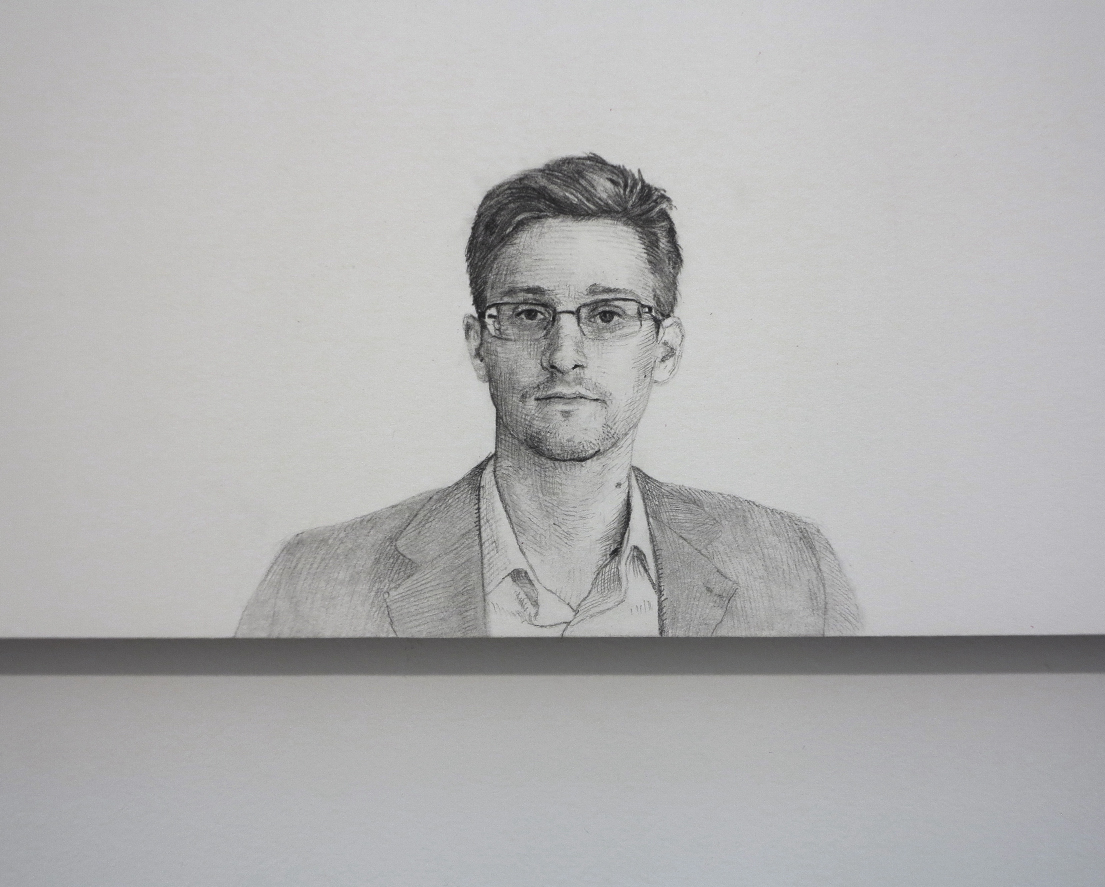 |
| Edward Snowden (detail) Graphite on Panel 16“ x 22“ 2015 Price on Request |
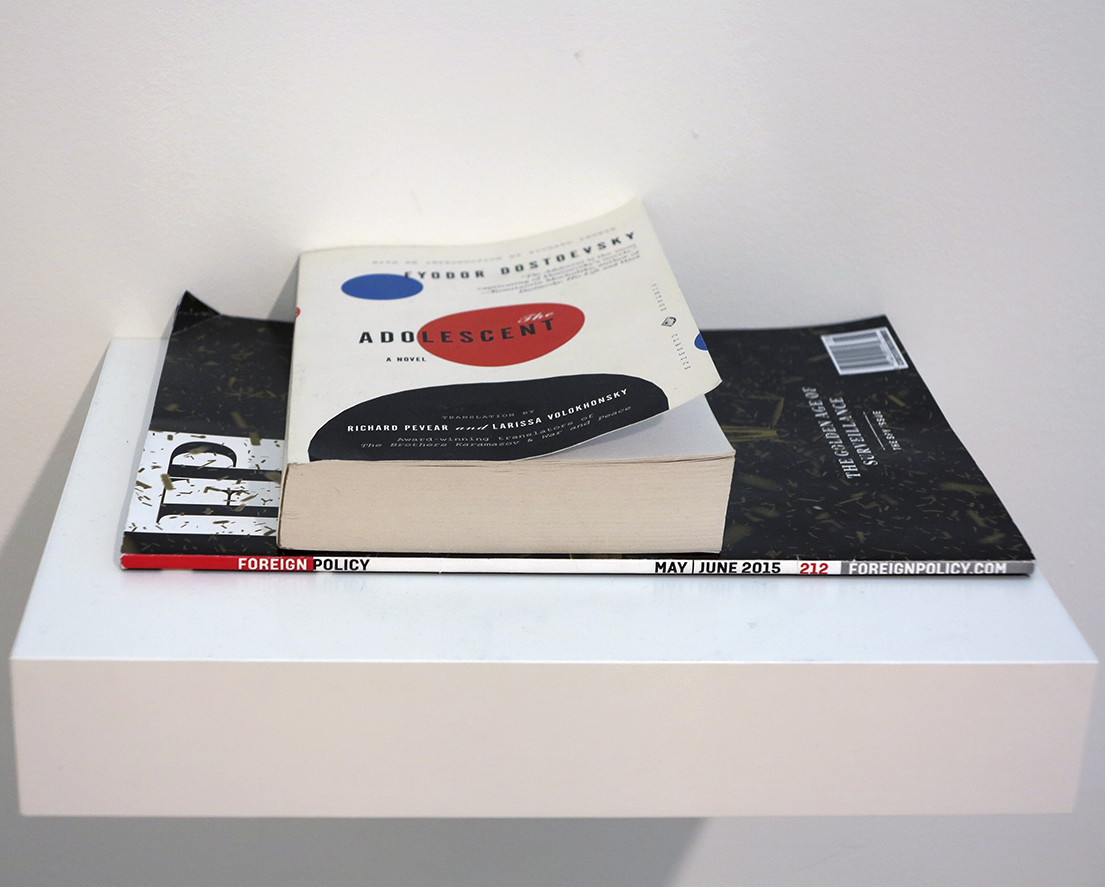 |
Book on shelf: The Adolescent, 1875 |
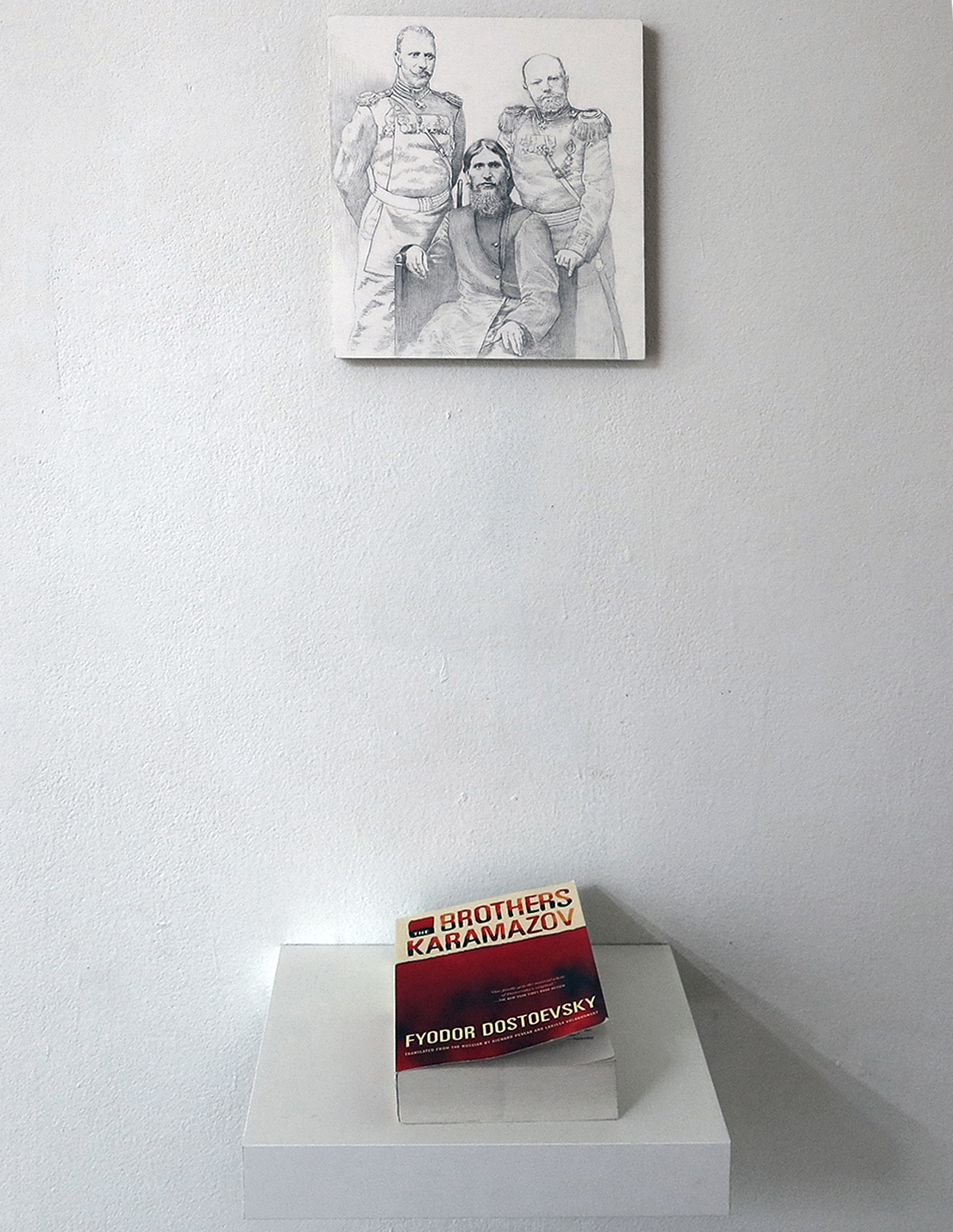 |
Grigori Rasputin and Generals |
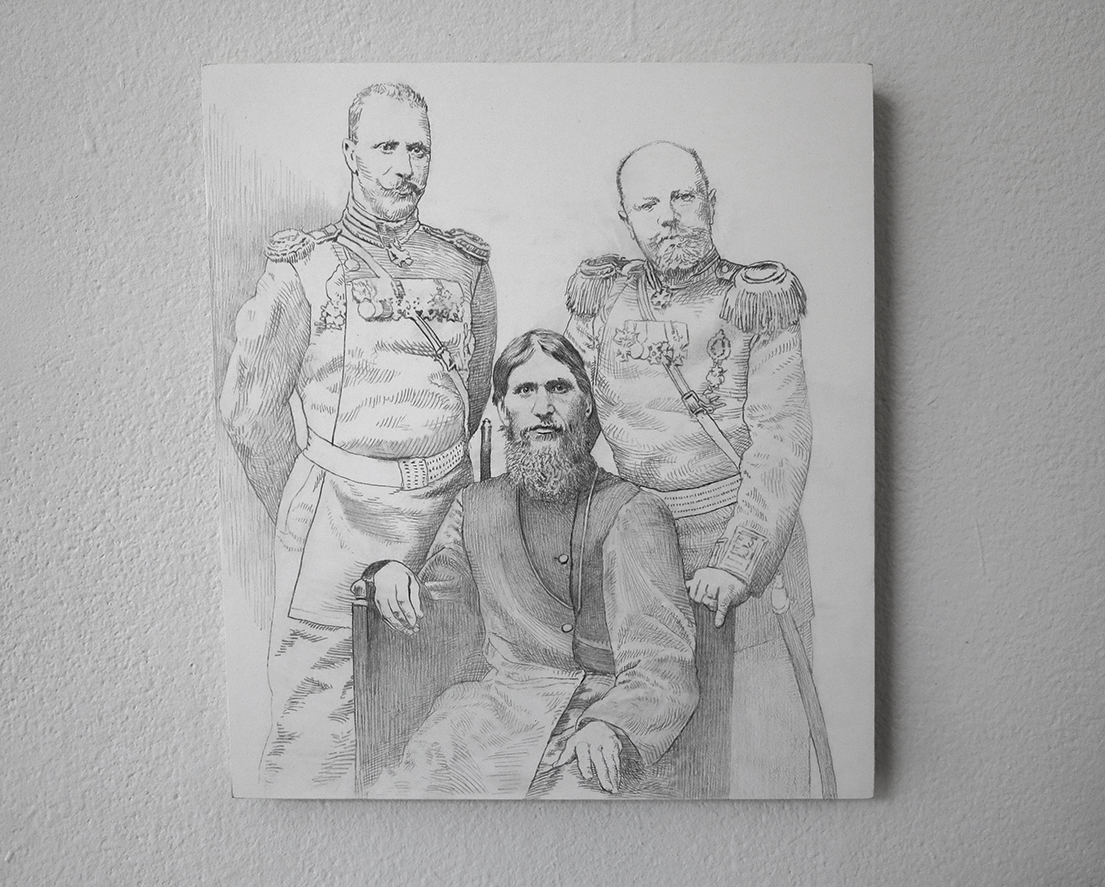 |
| Grigori Rasputin and Generals Graphite on Panel 10“ x 9“ 2015 Note: Rasputin (January 1869 – December 1916 ) was a Russian peasant, mystical faith healer and a trusted friend to the family of Nicholas II, the last Tsar of Russia. He became an influential figure in Saint Petersburg, especially after August 1915 when Nicholas took command of the army at the front. |
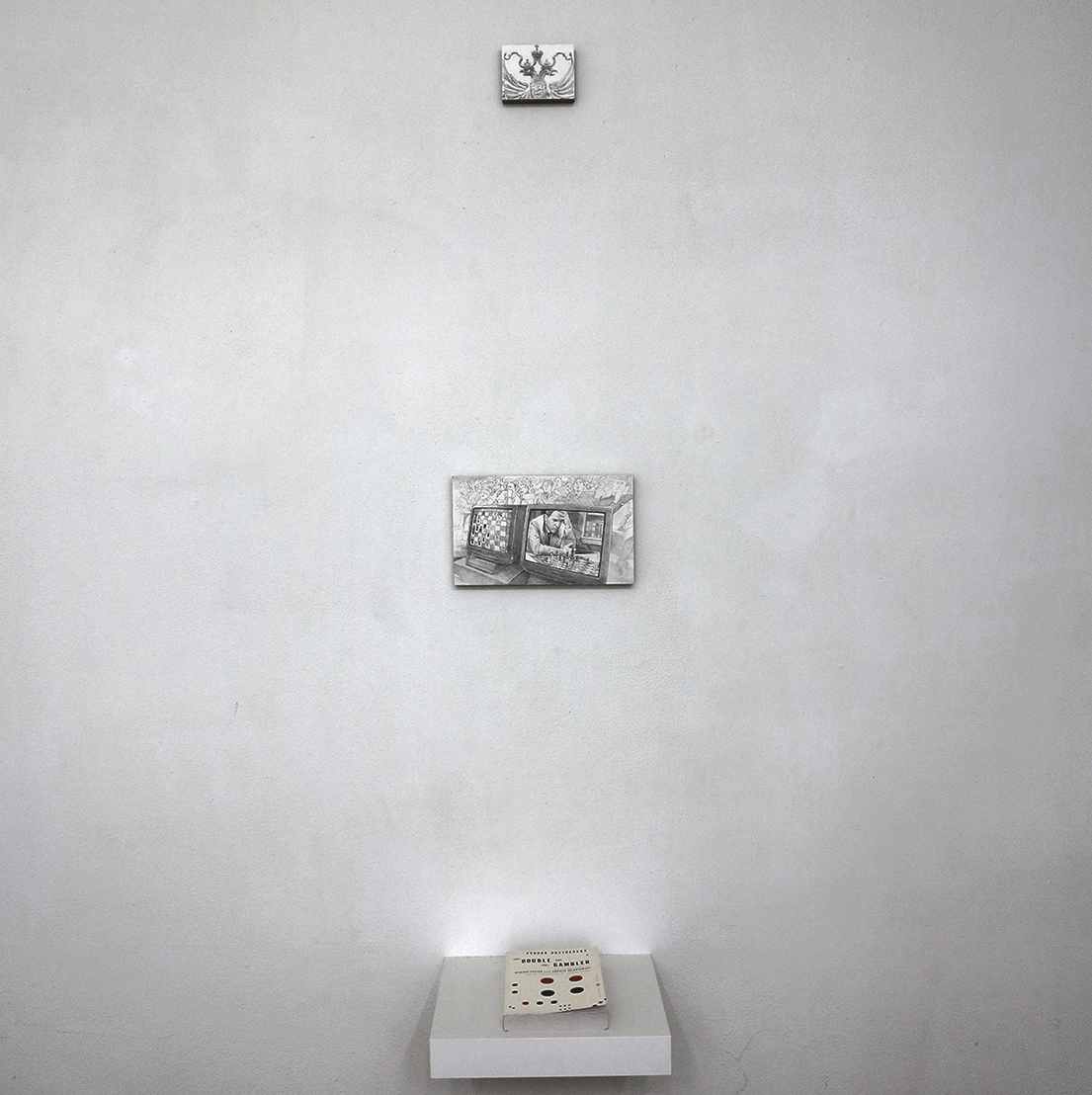 |
Russian Coat of Arms Deep Blue vs. Garry Kasparov Book on shelf: The Double, 1846 and The Gambler, 1866 |
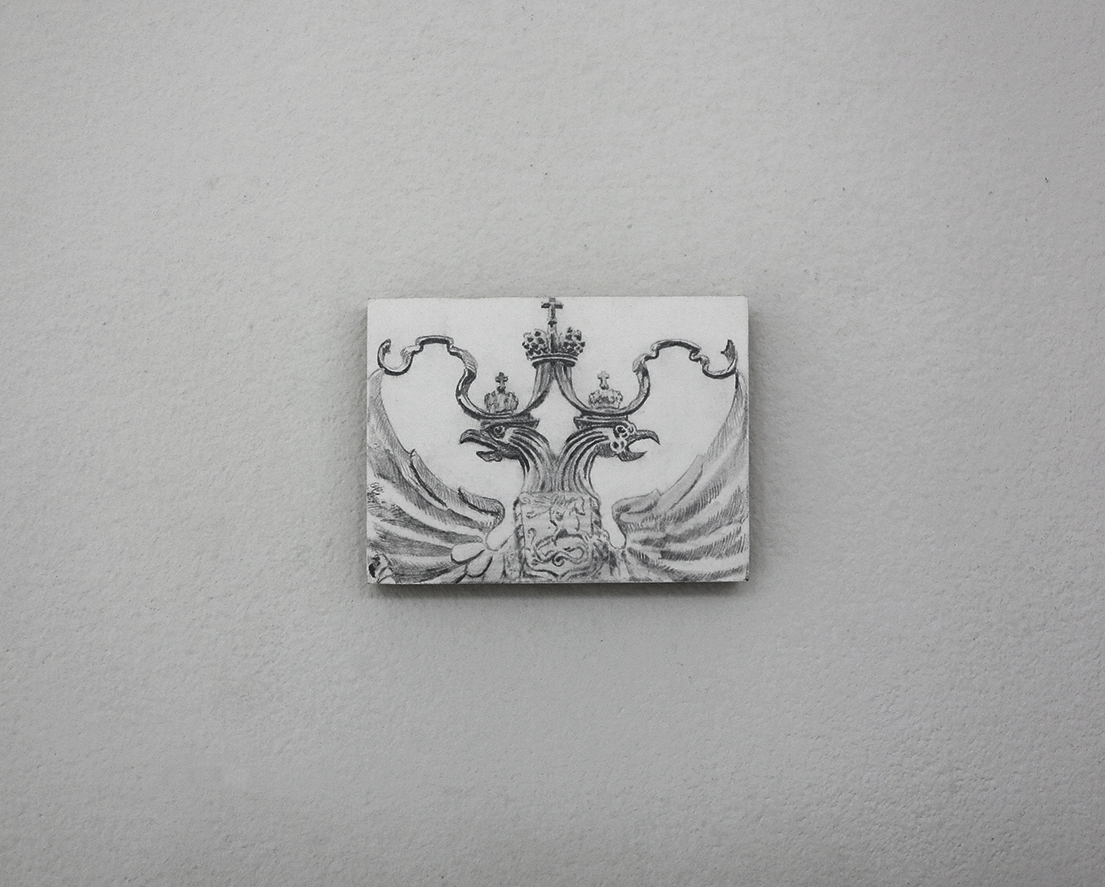 |
| Russian Coat of Arms Graphite on Panel 4“ x 3“ 2015 Note: The two-headed eagle is the coat of arms of the Russian Federation. It derives from the earlier coat of arms of the Russian Empire which was abolished with the Russian Revolution in 1917 and restored in 1993 after the constitutional crisis. |
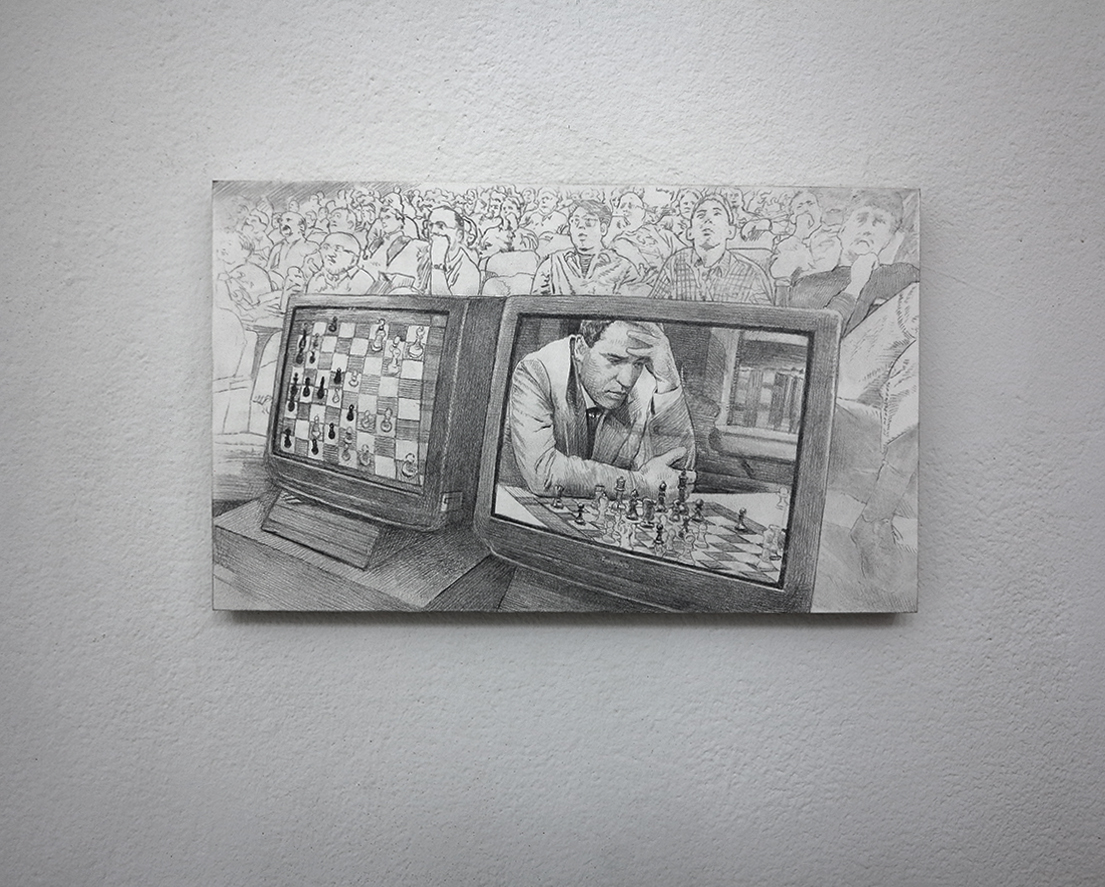 |
| Deep Blue vs. Garry Kasparov Graphite on Panel 6“ x 10” 2015 Note: Deep Blue vs. Garry Kasparov was a pair of six-game chess matches between chess champion Garry Kasparov and an IBM supercomputer called Deep Blue. The first match was played in Philadelphia in 1996 and won by Kasparov. The second was played in New York City in 1997 and won by Deep Blue. The 1997 match was the first defeat of a reigning world chess champion to a computer under tournament conditions. |
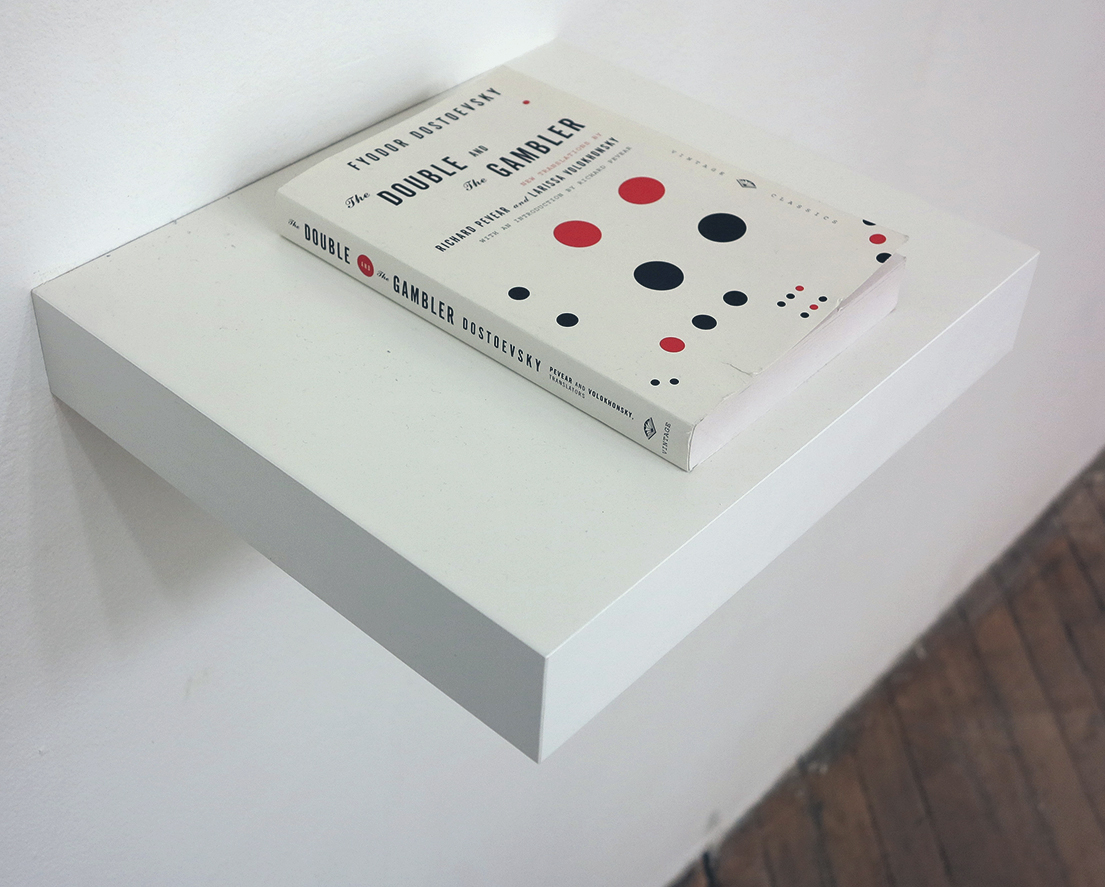 |
| Book on shelf: The Double, 1846 and The Gambler, 1866 Fyodor Dostoyevsky (Nov. 1821 – Feb.1881) Note: The Double (1846) is a surprisingly modern hallucinatory nightmare in which a minor official named Goliadkin becomes aware of a mysterious doppelganger, a man who has his name and his face and who gradually and relentlessly begins to displace him with his friends and colleagues. The Gambler (1866) is a stunning psychological portrait of a young man's exhilarating and destructive addiction to gambling, a compulsion that Dostoevsky–who once gambled away his young wife's wedding ring–knew intimately from his own experience. In chronicling the disastrous love affairs and gambling adventures of Alexei Ivanovich, Dostoevsky explores the irresistible temptation to look into the abyss of ultimate risk that he believed was an essential part of the Russian national character. |
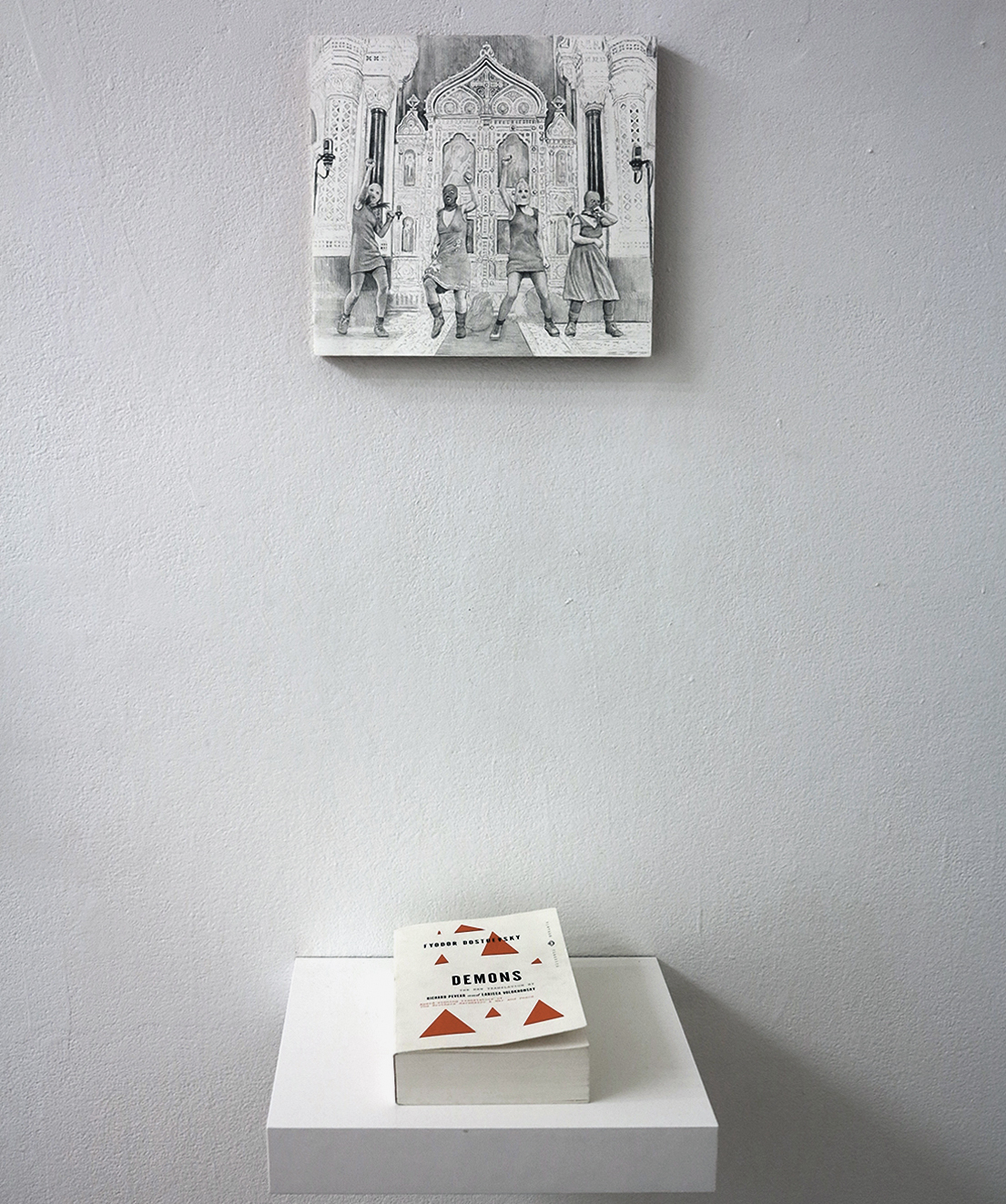 |
| Pussy Riot, Punk Prayer: Mother of God, Chase Putin Away Graphite on Panel 9“ x 10“ Book on Shelf: Demons, 1871-72 Fyodor Dostoyevsky (Nov. 1821 – Feb.1881) |
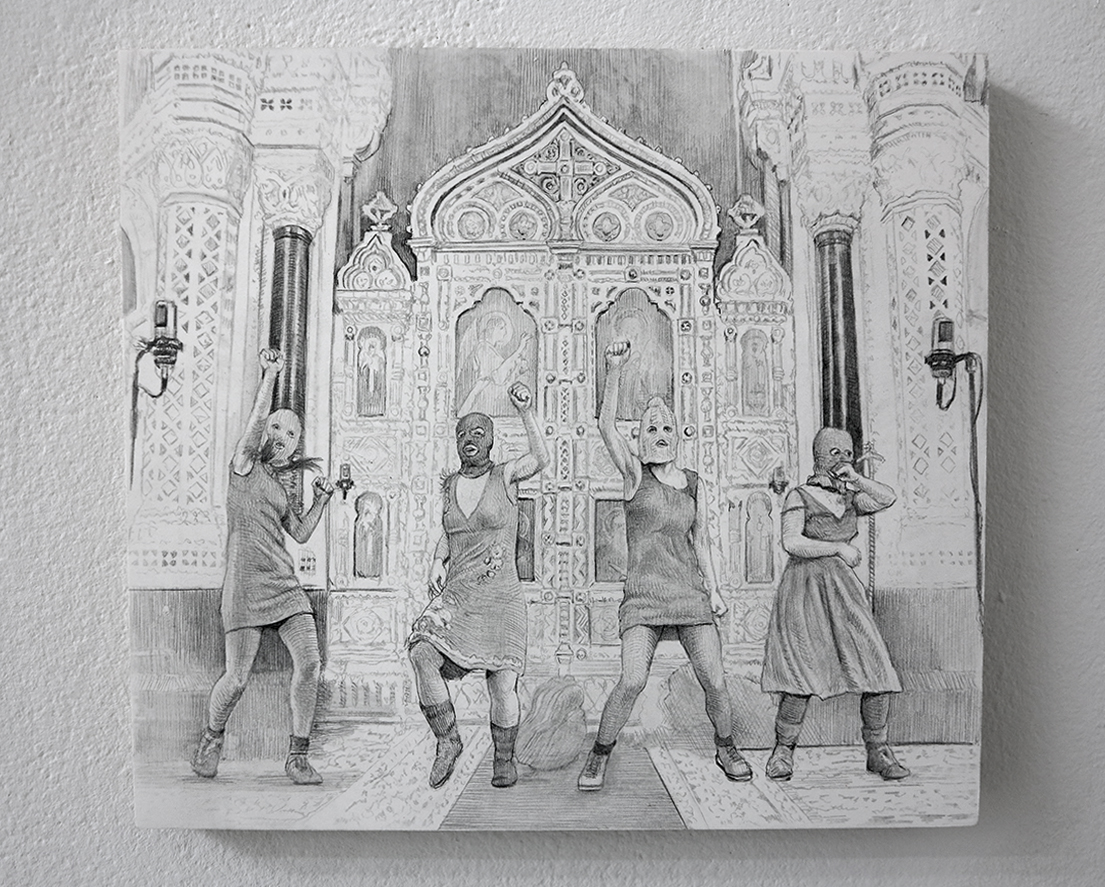 |
| Pussy Riot, Punk Prayer: Mother of God, Chase Putin Away Graphite on Panel 9“ x 10“ 2015 Note: On 21 February 2012, five members of the group Pussy Riot staged a performance on the soleas of Moscow's Cathedral of Christ the Savior. Their actions were stopped by church security officials. By evening, they had turned it into a music video entitled "Punk Prayer - Mother of God, Chase Putin Away!". The women said their protest was directed at the Orthodox Church leader's support for Putin during his election campaign. |
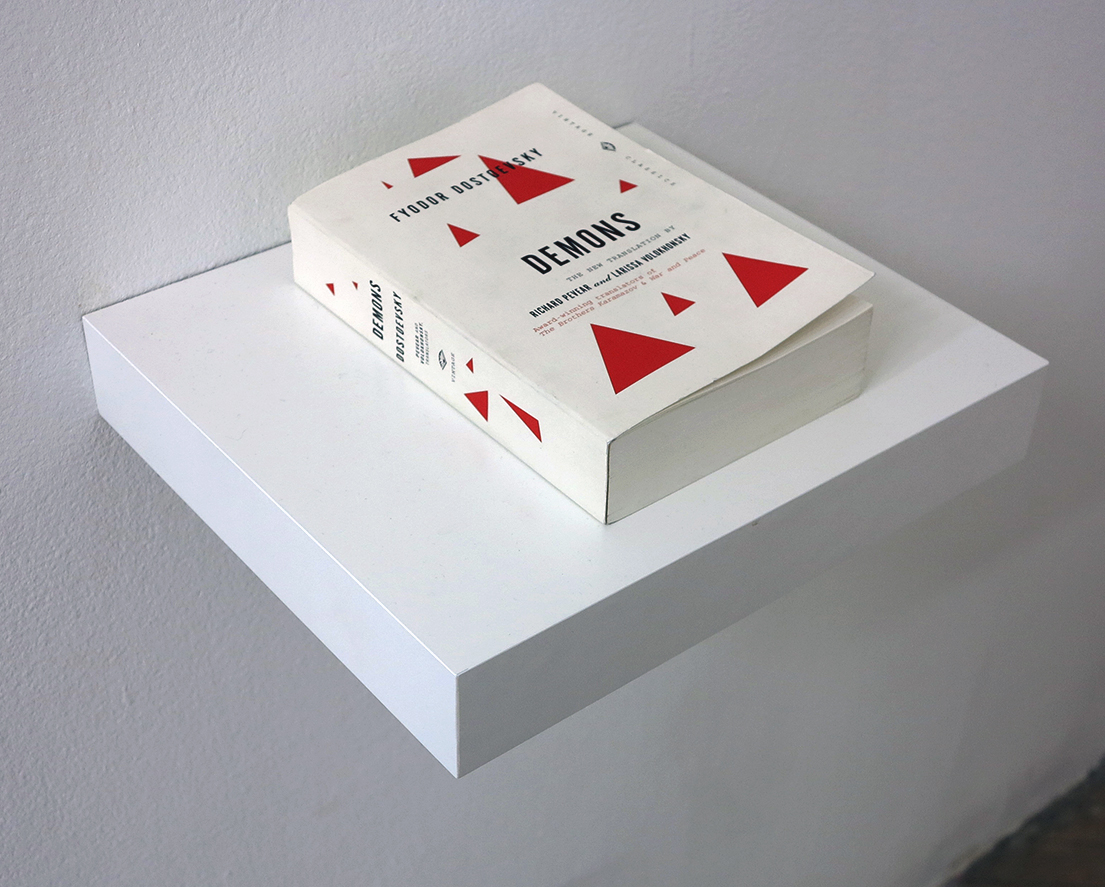 |
| Book on Shelf: Demons, 1871-72 Fyodor Dostoyevsky (Nov. 1821 – Feb.1881) Note: Demons is an allegory of the potentially catastrophic consequences of the political and moral nihilism that were becoming prevalent in Russia in the 1860s. A fictional Russian town descends into chaos as it becomes the focal point of an attempted revolution, orchestrated by master conspirator Pyotr Verkhovensky. |
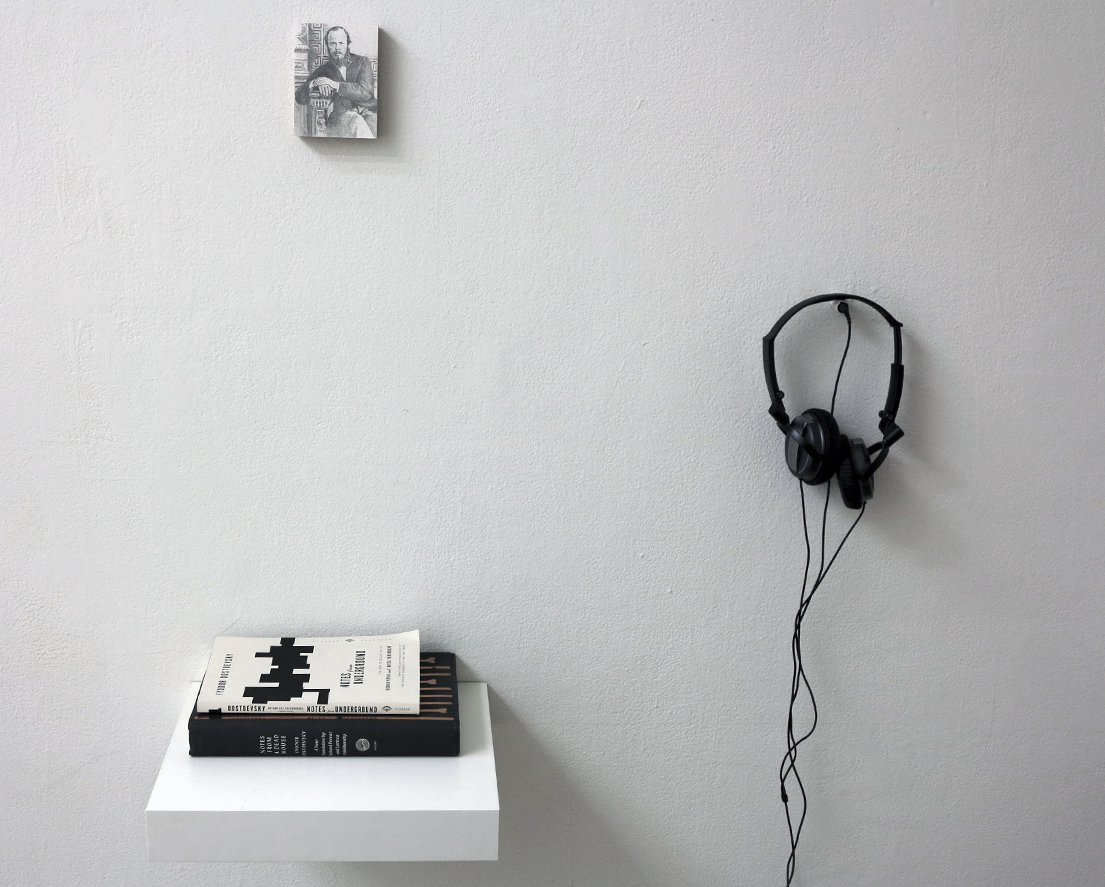 |
Fyodor Dostoyevsky Book on Shelf (bottom): Notes from a Dead House, 1864 Headphones: playing Part I of Notes from Underground, 1864 |
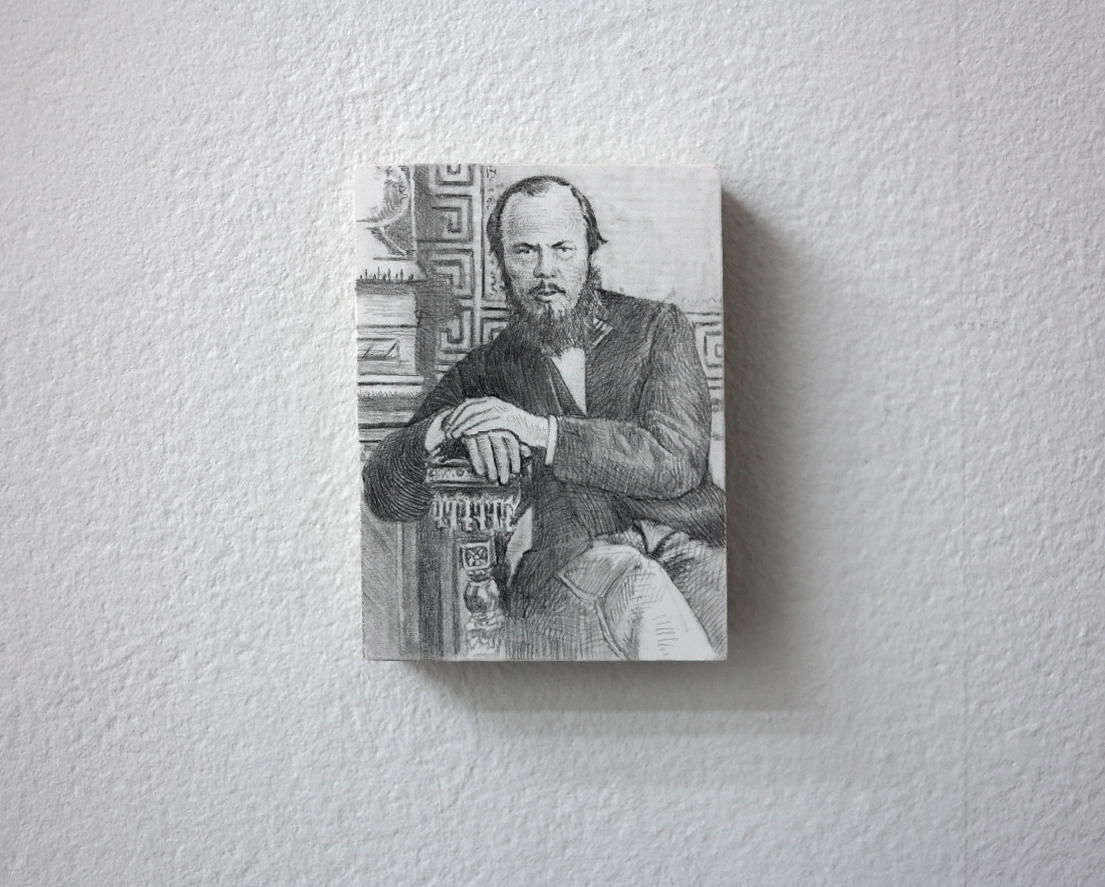 |
Fyodor Dostoyevsky |
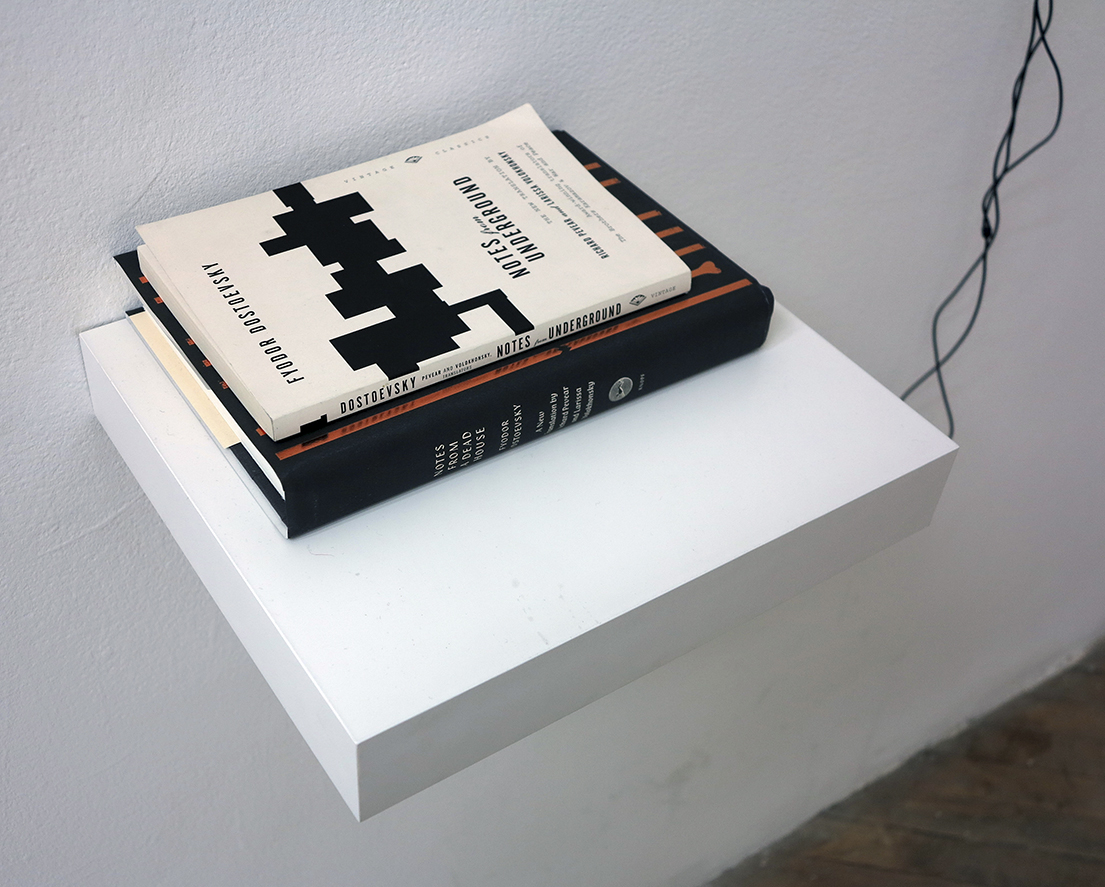 |
Book on Shelf (top): Notes from Underground, 1864 Book on Shelf (bottom): Notes from a Dead House, 1864 |
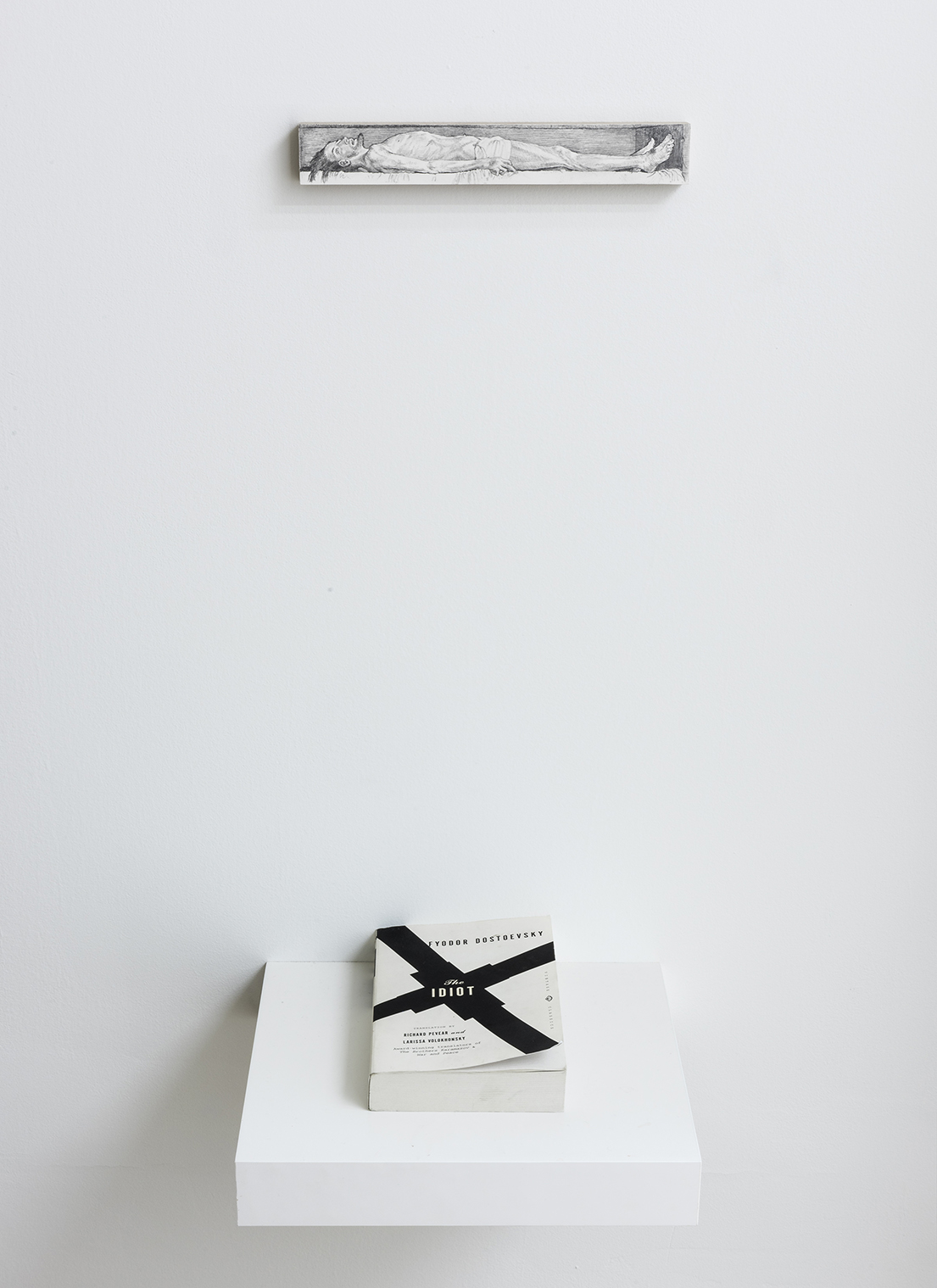 |
The Body of the Dead Christ in the Tomb after Hans Holbein the Younger Book on shelf: The Idiot, 1868-69 |
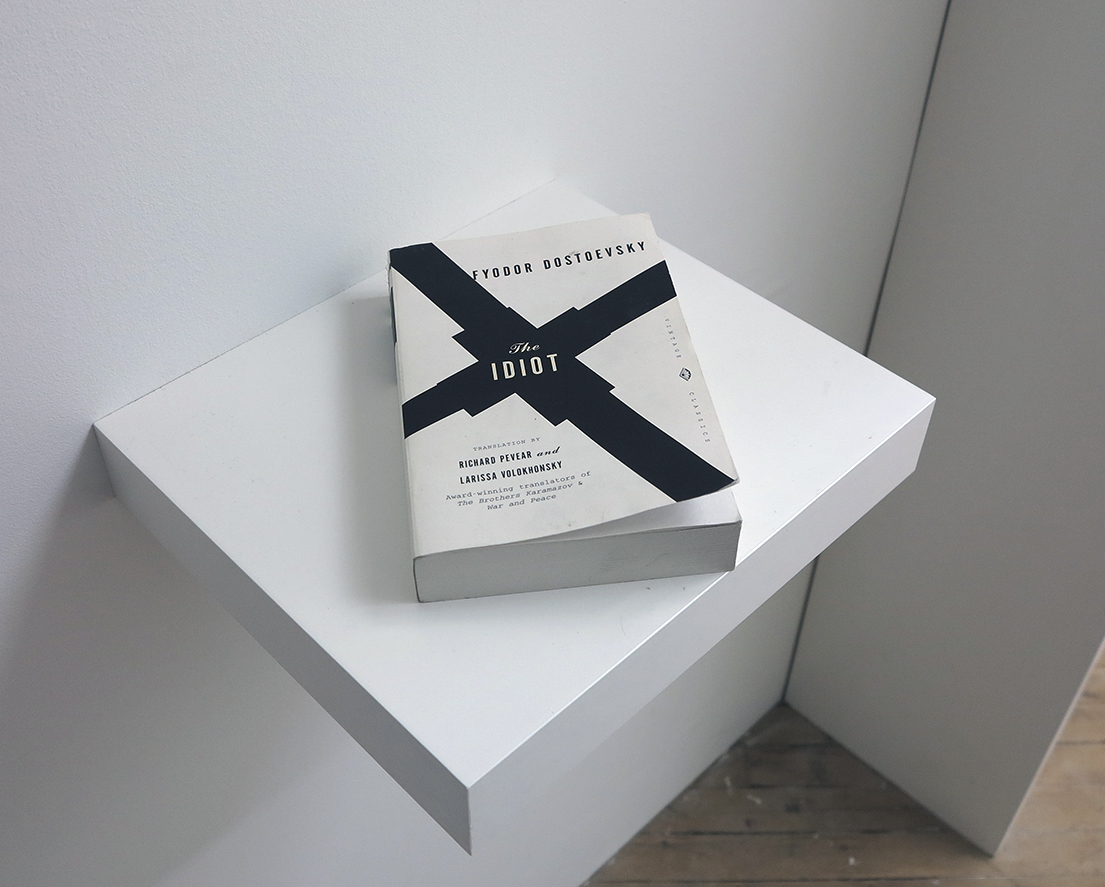 |
| Book on shelf: The Idiot, 1868-69 Fyodor Dostoyevsky (Nov. 1821 – Feb.1881) Notes: The title is an ironic reference to the central character of the novel, Prince Lyov Nikolaevich Myshkin, a young man whose goodness and open-hearted simplicity lead many of the more worldly characters he encounters to mistakenly assume that he lacks intelligence and insight. In the character of Prince Myshkin, Dostoevsky set himself the task of depicting "the positively good and beautiful man" |
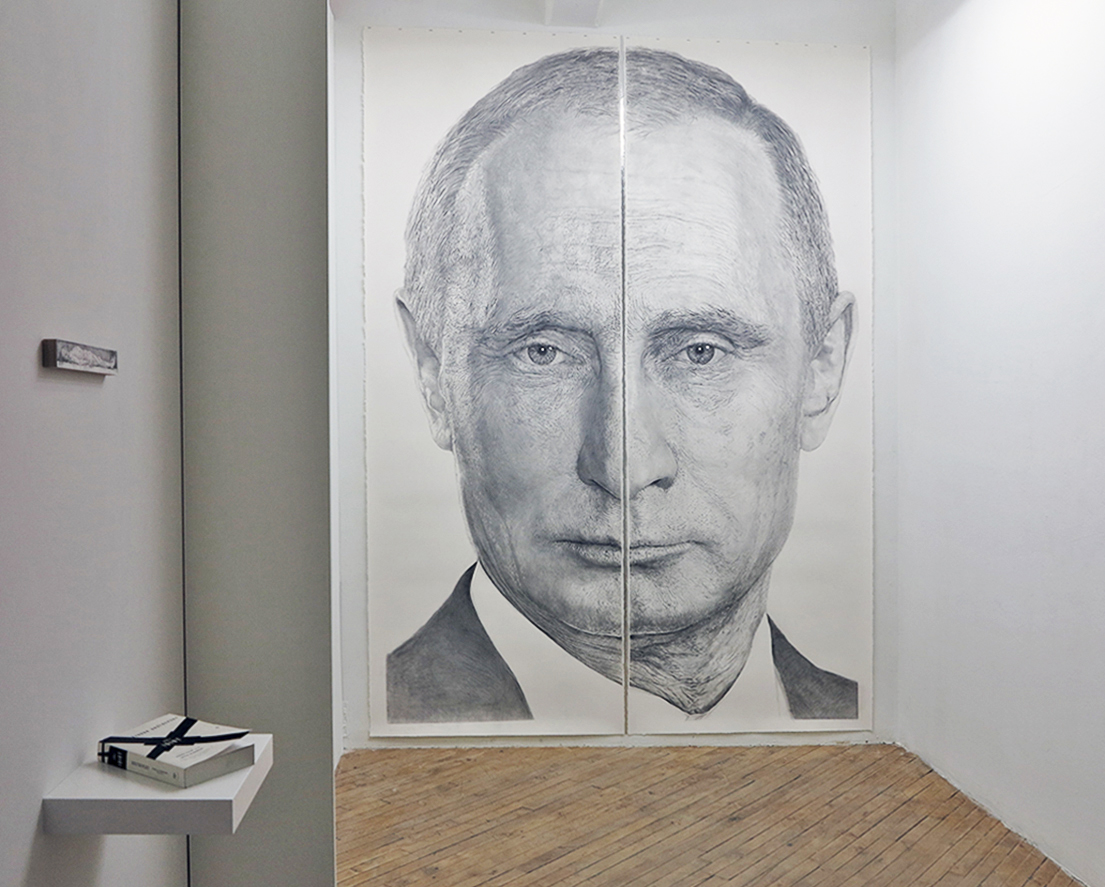 |
| Vladimir Vladimirovich Putin Graphite on BFK RIVES Paper 122” x 92” |
| (Note: Most text notes are adapted excerpts from Wikipedia entries) |
| back to top |